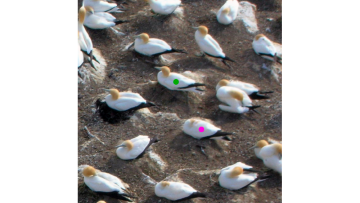14:15
The spine of the T-graph of the Hilbert scheme
Abstract
The torus T of projective space also acts on the Hilbert
scheme of subschemes of projective space, and the T-graph of the
Hilbert scheme has vertices the fixed points of this action, and edges
the closures of one-dimensional orbits. In general this graph depends
on the underlying field. I will discuss joint work with Rob
Silversmith, in which we construct of a subgraph, which we call the
spine, of the T-graph of Hilb^N(A^2) that is independent of the choice
of field. The key technique is an understanding of the tropical ideal,
in the sense of tropical scheme theory, of the ideal of the universal
family of an edge in the spine.


